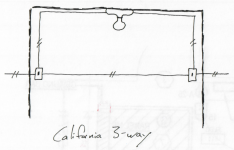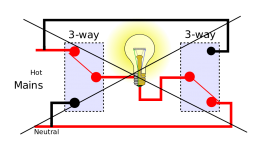Scheffler Energy
Member
- Location
- Minnesota USA
- Occupation
- Master Electrician
I have been doing some research on 3 way switches. From my research the three diffrent ways to wire a 3 way switch circuit you leave a neutral out of some of the switch locations. Is it a code violation to run a 3 wire nm with a 2 wire nm just to add a neutral In the switch box? Just running a 3 wire you don’t have enough conductors to add a neutral to the switch box? I wanted to know if running a neutral not in the same cable jacket was a Code violation? What’s the standard practice to get a neutral in every switch location.? Would need a 4 wire nm cable.



